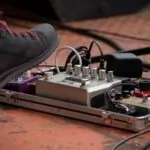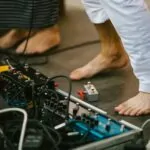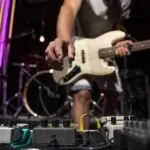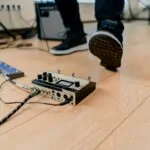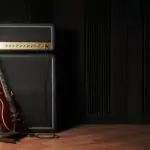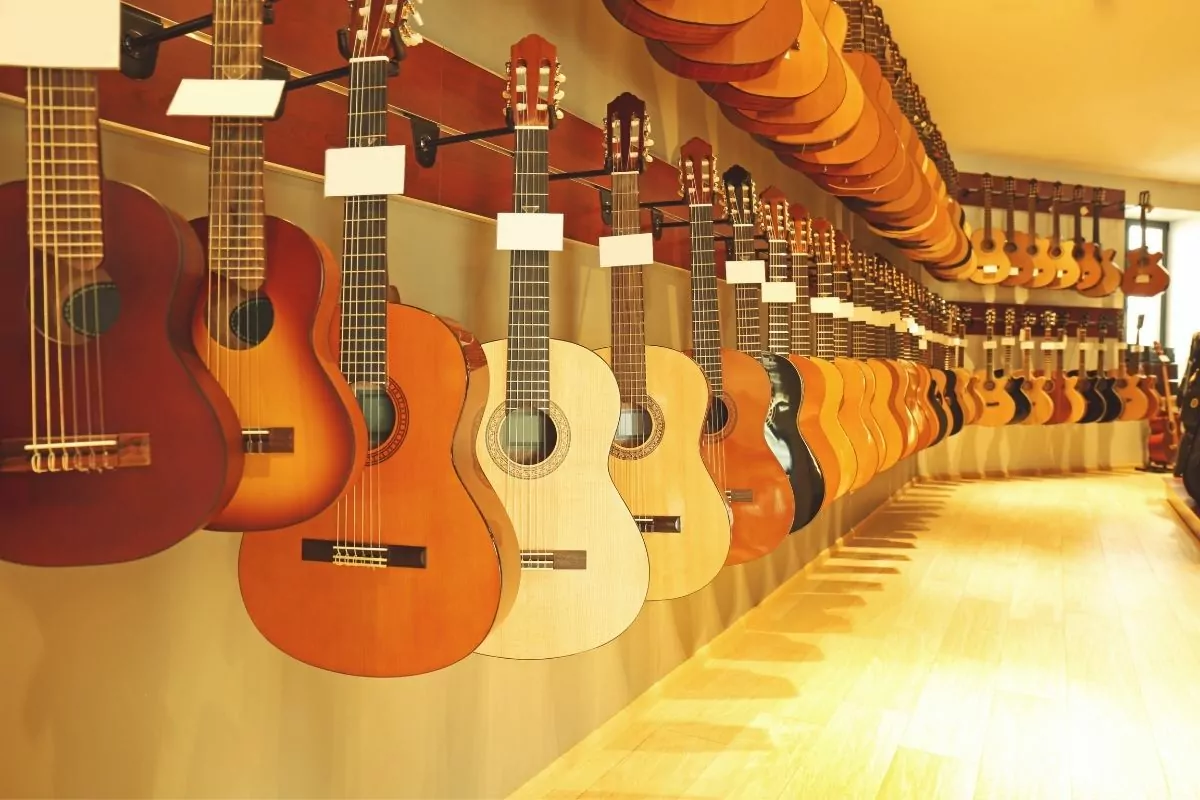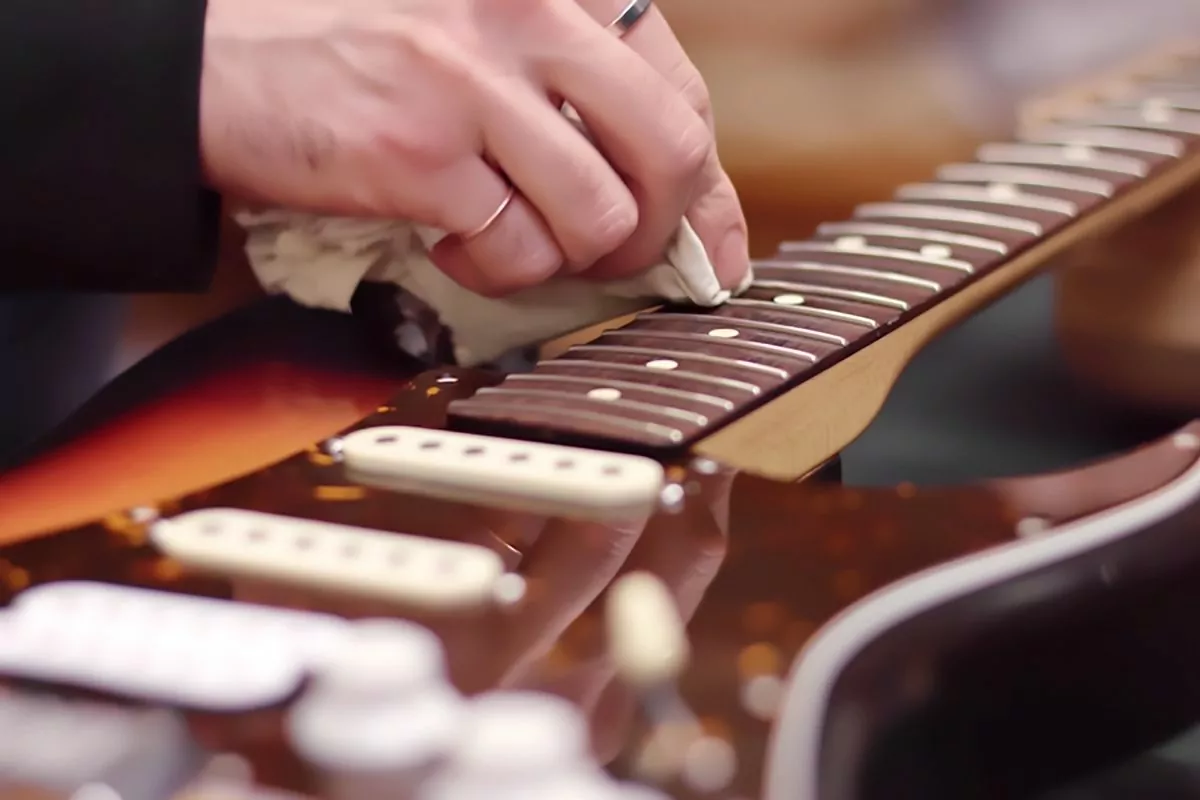I have been playing guitar for years, and one of the most frustrating things I’ve encountered is noisy guitar pedals.
Whether you’re playing live or recording, noise in your signal chain can be a major distraction and take away from the overall quality of your sound. But fear not, there are ways to mitigate and eliminate noise in your guitar pedal setup.
Understanding the source of noise in your guitar pedal setup is crucial in order to tackle the issue. Noise can be caused by a number of factors, including ground loops, electromagnetic interference, and poor quality cables.
By identifying the root cause of the noise, you can take the necessary steps to eliminate it and achieve a clean, noise-free sound.
In this article, I will share some tips and techniques for mitigating noise in your guitar pedal setup, as well as troubleshooting common issues and selecting the right gear for a quiet rig.
Check out these other posts:
Key Takeaways on Noisy Guitar Pedals
- Noise in your guitar pedal setup can be caused by a variety of factors, including ground loops, electromagnetic interference, and poor quality cables.
- Identifying the root cause of the noise is crucial in order to eliminate it and achieve a clean, noise-free sound.
- Mitigating noise in your guitar pedal setup involves a combination of techniques, including proper guitar and pedal setup, noise reduction strategies, and selecting the right gear for a quiet rig.
See these other top picks to elevate your playing experience:
Understanding Guitar Pedal Noise
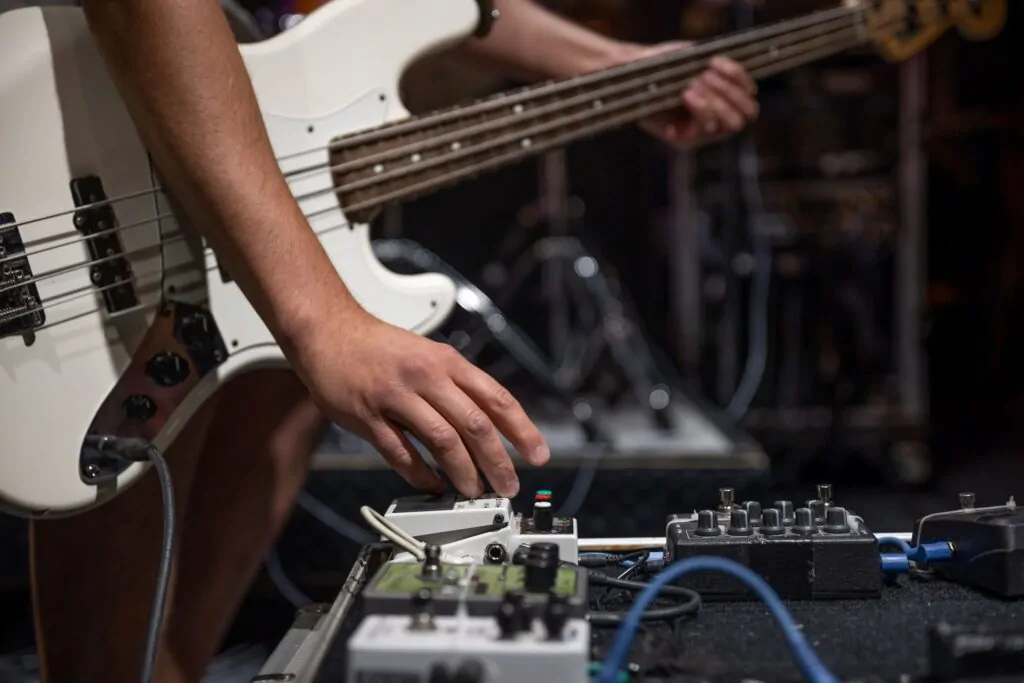
As a guitarist, I know how frustrating it can be to deal with noisy pedals. Understanding the sources of noise and the types of noisy pedals can help you diagnose and fix the problem quickly.
Sources of Noise
There are several sources of noise that can affect your guitar pedals. One of the most common sources of noise is the 60 cycle hum. This is a low-frequency hum that is caused by the electromagnetic field around your guitar and amplifier. Other sources of noise can include ground loops, EMI (electromagnetic interference), and dirty power.
Types of Noisy Pedals
Not all pedals are created equal when it comes to noise. Some pedals are inherently noisier than others, while some pedals can become noisy over time due to wear and tear. Here are some of the most common types of noisy pedals:
- Fuzz Pedals: Fuzz pedals are known for their gritty, distorted sound, but they can also be quite noisy. This is because fuzz pedals amplify the noise in your signal along with the guitar’s sound.
- Wah Pedals: Wah pedals can also be quite noisy, especially if they are not properly shielded. This is because the moving parts inside the pedal can pick up electromagnetic interference.
- High-Gain Pedals: High-gain pedals are designed to produce a lot of distortion, but they can also produce a lot of noise. This is because they amplify the noise in your signal along with the guitar’s sound.
Noise Mitigation Techniques
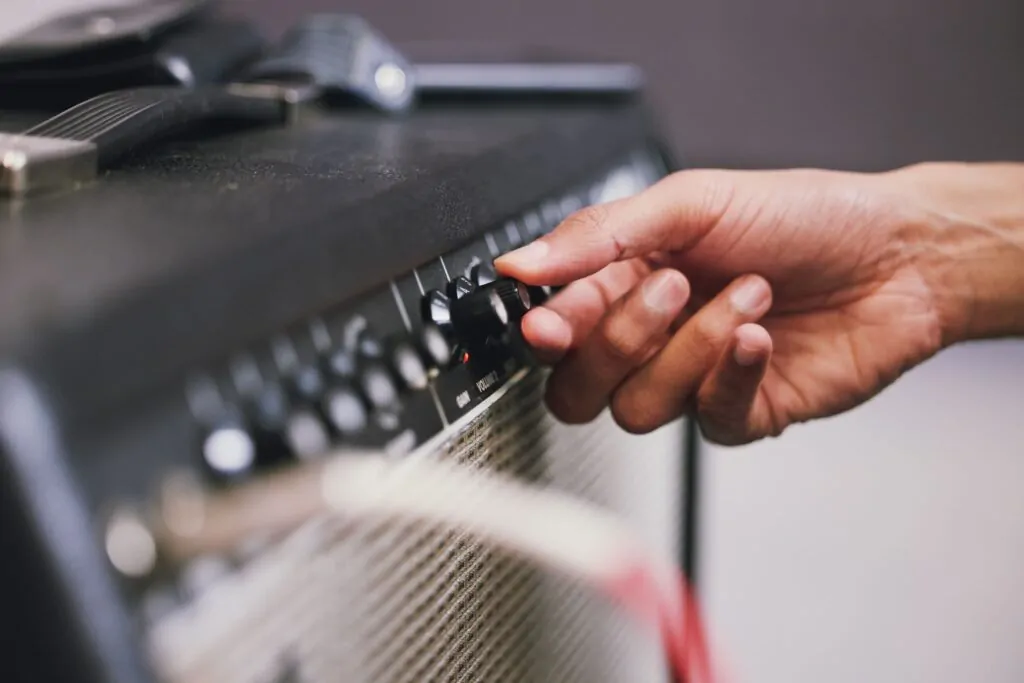
Dealing with noisy pedals can be a frustrating experience. Fortunately, there are several noise mitigation techniques that can help you minimize or eliminate unwanted noise from your signal chain.
In this section, I will discuss some of the most effective noise mitigation techniques that I have used in my own setup.
Noise Gates and Suppressors
One of the most effective ways to deal with noisy pedals is to use a noise gate or suppressor. These devices work by cutting off the signal when it falls below a certain threshold, effectively muting any unwanted noise. Noise gates and suppressors come in many different shapes and sizes, and can be used in a variety of different settings.
Power Supply Solutions
Another common cause of noisy pedals is a poor quality power supply. Using a high-quality, isolated power supply can help to minimize noise interference and ensure that your pedals receive a clean, consistent power supply.
Daisy chain power supplies are often a culprit of noisy pedals, so it’s important to avoid them and use a reputable, isolated power supply instead. Additionally, using a power conditioner can help to filter out any unwanted noise from your power supply.
Cable and Wiring Strategies
Cables and wiring can also be a source of noise in your signal chain. Using high-quality cables with good shielding can help to minimize interference and reduce noise.
Additionally, proper grounding and shielding of your guitar and pedals can help to eliminate any ground loop issues that may be causing noise. It’s also important to check your cables regularly for any damage or wear, as a bad cable can cause noise and other issues in your signal chain.
Guitar and Pedal Setup
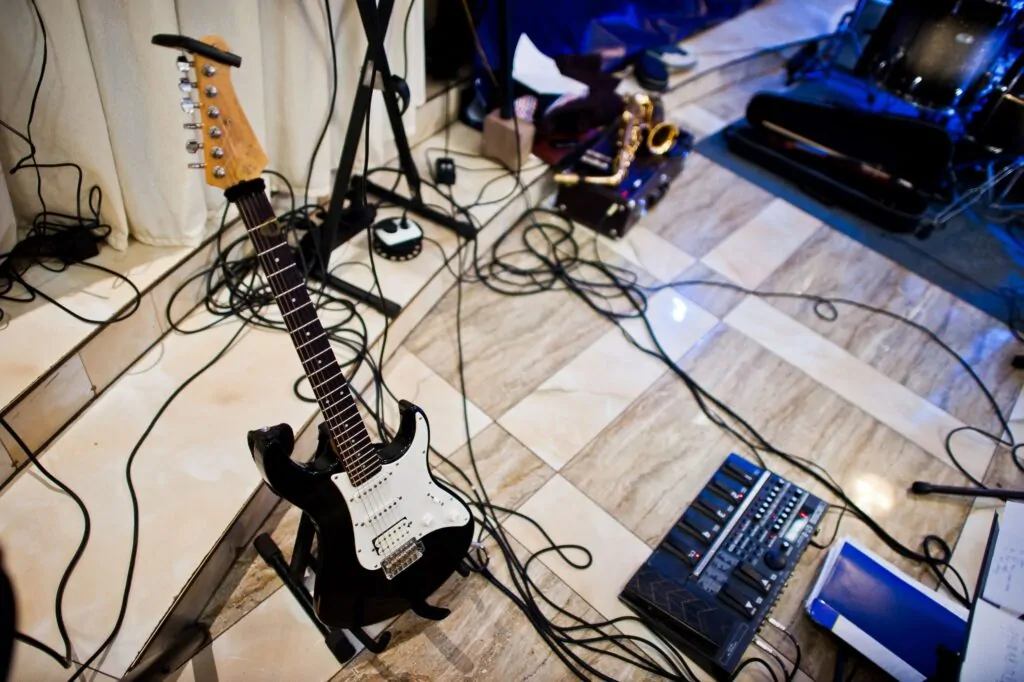
With a few adjustments to your guitar and pedal setup, you can significantly reduce unwanted noise and achieve a cleaner sound.
Pickup Selection
The type of pickups you use can affect the amount of noise in your signal chain. Single-coil pickups are more prone to picking up interference and producing a hum or buzz.
On the other hand, humbucking pickups are designed to cancel out unwanted noise and provide a quieter signal. If you prefer single-coil pickups, consider investing in noiseless pickups that are designed to reduce hum and buzz.
Pedalboard Arrangement
The arrangement of your pedals on your pedalboard can also affect the amount of noise in your signal chain. Some pedals are more prone to producing noise than others, and the order in which they are arranged can make a significant difference.
For example, placing a buffer pedal at the beginning of your signal chain can help reduce high-frequency loss and prevent noise from entering your signal chain. Additionally, placing time-based effects like delay and reverb in the effects loop of your amp can help reduce noise and provide a cleaner sound.
Amp Settings
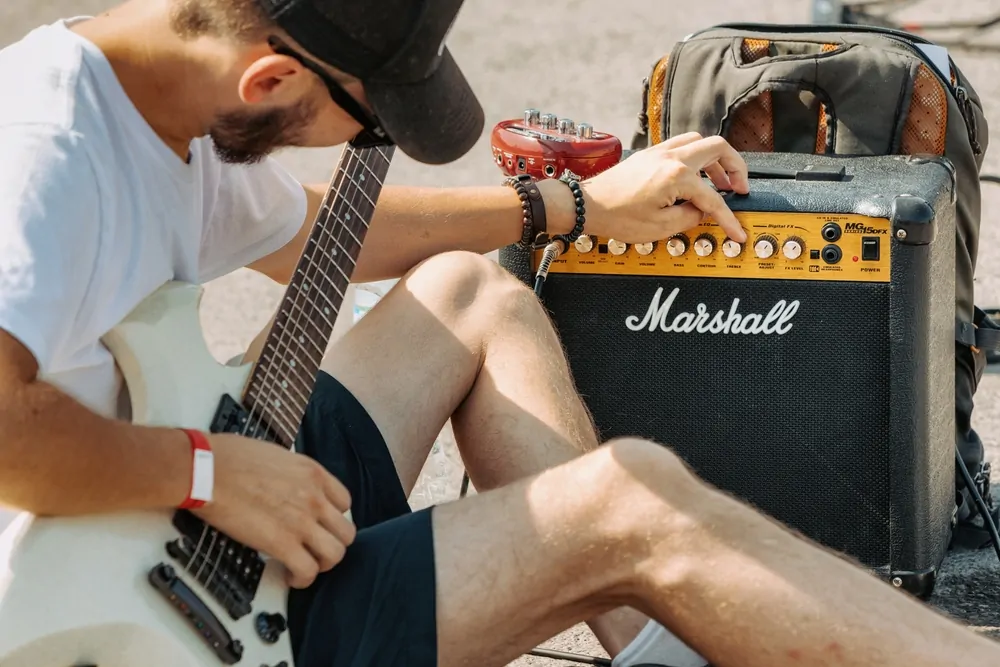
Finally, your amp settings can also affect the amount of noise in your signal chain. If you’re using high gain settings, you’re more likely to experience noise and unwanted feedback. Consider reducing your gain settings and using a noise gate pedal to help reduce unwanted noise.
Additionally, adjusting the EQ settings on your amp can help reduce noise and provide a cleaner sound.
Troubleshooting Common Issues
In this section, I will cover some of the most common issues that cause noisy pedals and how to troubleshoot them.
Identifying Problematic Components
One of the first steps in troubleshooting a noisy pedal is to identify the problematic component. This can be done by swapping out one component at a time until the noise disappears. The most common problematic components are bad cables, loose connections, and faulty pedals.
Dealing with Grounding and Power Issues
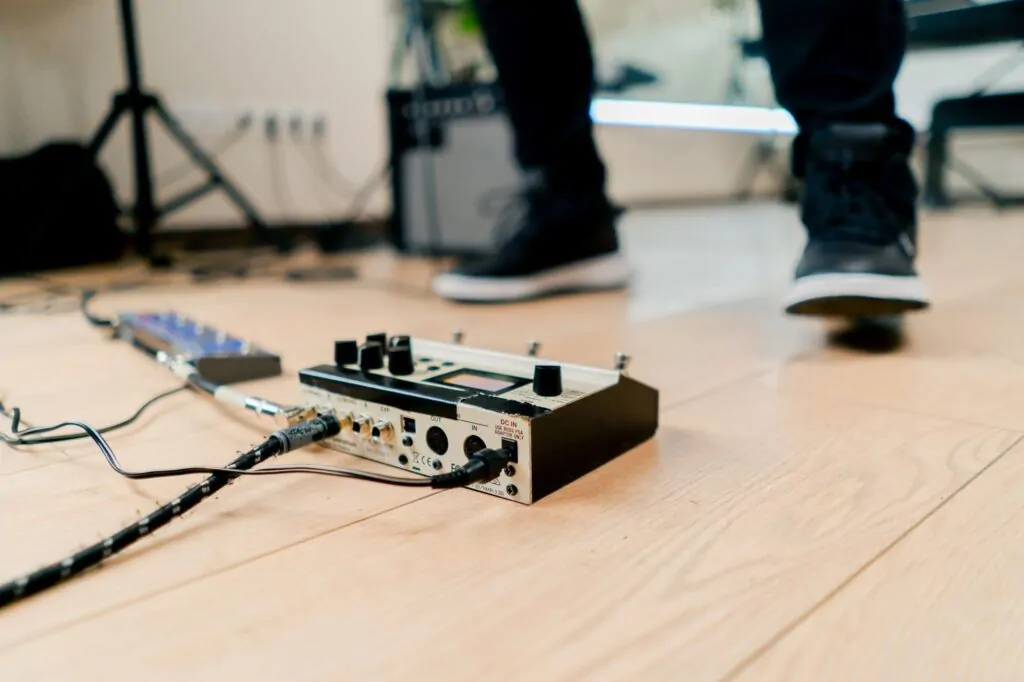
Bad ground or grounding issues are one of the most common causes of noisy pedals. To fix this issue, it is important to ensure that all components are properly grounded. This can be done by checking the ground wires and making sure they are connected properly.
Additionally, using a power conditioner or isolated power supply can help eliminate noise caused by AC power.
Handling Vintage and Digital Pedals
Vintage pedals and digital pedals can be more prone to noise issues than other pedals. For vintage pedals, it is important to ensure that the components are in good condition and that any old wiring is replaced.
For digital pedals, it is important to ensure that the power source is clean and stable, as digital pedals are more sensitive to power fluctuations.
Troubleshooting noisy pedals can be a simple process if you know what to look for. By identifying problematic components, dealing with grounding and power issues, and handling vintage and digital pedals, you can eliminate noise and enjoy a clean signal from your pedals.
Advanced Noise Reduction Strategies
Advanced noise reduction strategies are often necessary to achieve a truly noiseless performance. While basic noise reduction techniques such as using a noise gate pedal or a Boss NS-2 Noise Suppressor can help reduce noise, they may not always be enough.
In this section, I will discuss some advanced noise reduction strategies that can help you achieve a clean and noise-free sound.
Utilizing High-End Gear
One of the most effective ways to reduce noise is to invest in high-end gear. For example, the MXR Smart Gate and the ISP Decimator II are both excellent noise reduction pedals that are designed to provide superior noise reduction. These pedals use advanced algorithms to detect and eliminate unwanted noise, resulting in a clean and clear sound.
Check out our top recommendation here:
- Dual channel remote foot controller
- Remotely switch between channels 1 & 2 or sync
- Genuine Dunlop foot switcher
Another option is to use an attenuator. Attenuators are devices that allow you to reduce the volume of your guitar signal without affecting the tone. This can be useful in situations where you need to reduce the volume of your guitar without sacrificing your tone.
Some attenuators, such as the Boss Waza Tube Amp Expander, also include noise reduction features, making them an excellent choice for guitarists who want to achieve a noiseless performance.
Custom Solutions for Noiseless Performance
In some cases, custom solutions may be necessary to achieve a truly noiseless performance. For example, a true bypass loop can be used to eliminate noise caused by pedals that are not true bypass. A true bypass loop allows you to bypass these pedals when they are not in use, resulting in a clean and noise-free signal.
Another option is to use an isolator. An isolator is a device that separates your guitar signal from the rest of your equipment, eliminating noise caused by ground loops and other interference. Isolators can be especially useful in situations where you are playing in a noisy environment, such as a club or a concert.
Selecting the Right Gear for a Quiet Rig
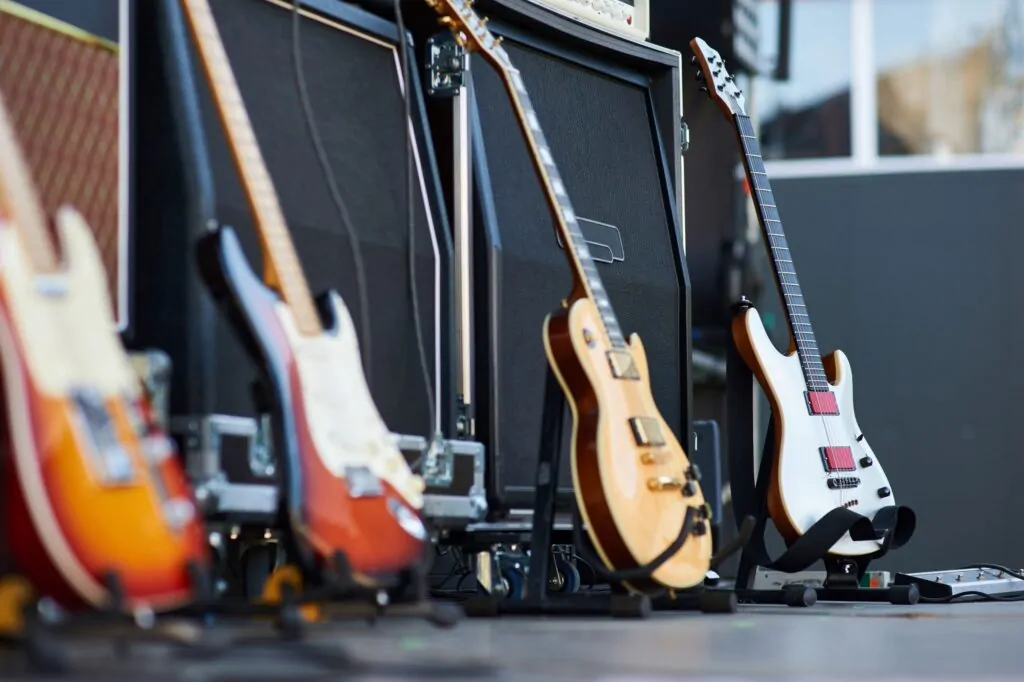
Noisy pedals can ruin your tone and make it difficult to play. However, there are steps you can take to minimize noise in your rig. In this section, I’ll cover some gear recommendations that can help you achieve a quieter setup.
Pedal Recommendations
When it comes to pedals, noise gates are an essential tool for reducing unwanted noise. They work by cutting off the audio signal when it falls below a certain threshold. This helps to eliminate hum and hiss from your rig. Some popular noise gates include the Boss NS-2 and the ISP Decimator.
Distortion pedals and fuzz pedals can be a source of noise in your rig. If you’re experiencing noise with these pedals, consider using a noise gate or a buffer pedal to clean up your signal. A compressor pedal can also help to even out your signal and reduce noise.
Delay and modulation pedals can also add noise to your signal. To minimize this, look for pedals with a high signal-to-noise ratio. The Strymon Timeline and the Eventide H9 are two examples of high-quality delay pedals with low noise levels.
Guitar and Amp Choices
Your guitar and amp choices can also affect the noise level in your rig. Single-coil pickups are more prone to picking up noise than humbuckers. If you’re experiencing noise with your single-coil pickups, consider using a noiseless pickup like the DiMarzio Area 58 or the Seymour Duncan Hot Rails.
Tube amps are known for their warm, rich tone, but they can also be noisy. If you’re experiencing noise with your tube amp, try replacing the preamp tubes. Sometimes a simple tube swap can make a big difference in noise levels.
Finally, consider using a pedalboard power supply with isolated outputs. This can help to eliminate ground loop noise and other unwanted noise in your rig.
By selecting the right gear for your setup, you can achieve a quieter, more enjoyable playing experience. Remember to experiment with different pedals, pickups, and amps to find the combination that works best for you.
Frequently Asked Questions
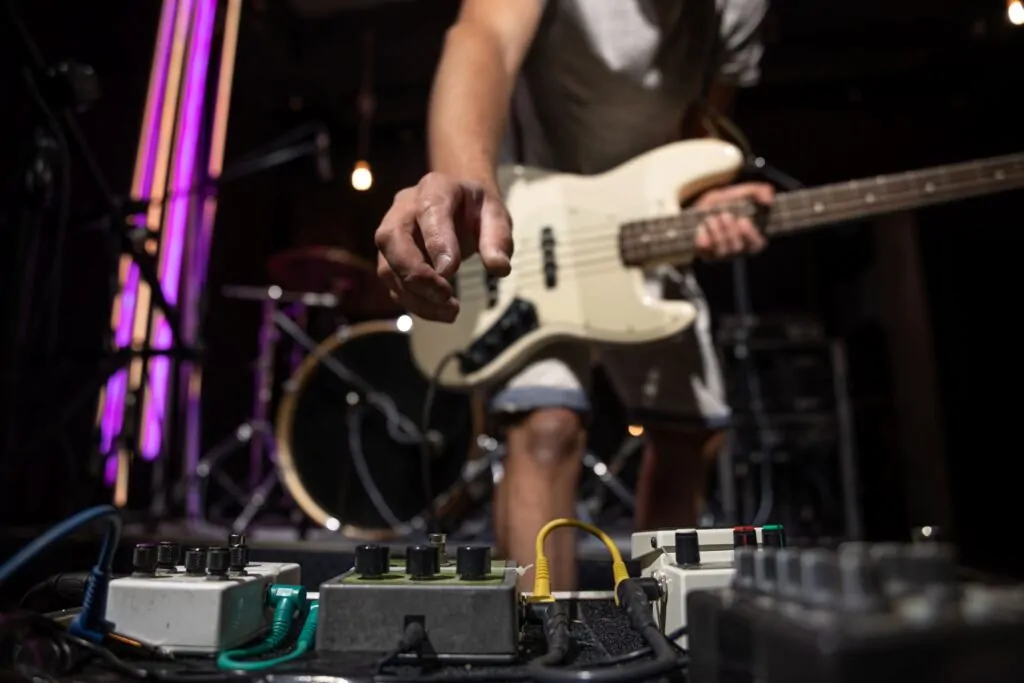
How can I reduce the noise from my guitar pedal setup?
Reducing the noise from your guitar pedal setup can be achieved by following a few steps. Firstly, ensure that your cables are in good condition and not damaged.
Secondly, use a good quality power supply that is isolated and can handle the power requirements of your pedals.
Thirdly, use a noise gate pedal to eliminate unwanted noise from your signal chain. Lastly, consider using a buffer pedal to maintain the integrity of your signal.
What causes a guitar pedal to produce a buzzing sound?
A guitar pedal can produce a buzzing sound due to a variety of reasons. One of the most common causes is a ground loop, which occurs when there is a difference in the ground potential between different components in your setup.
Another cause can be a faulty power supply or a damaged cable. It is important to troubleshoot your setup to identify and fix the root cause of the buzzing sound.
Are there specific pedals known for introducing less noise into the signal chain?
Yes, there are specific pedals that are known for introducing less noise into the signal chain. These pedals are designed with high-quality components and are built to minimize noise.
However, it is important to note that the overall noise level of your setup depends on various factors such as the quality of your cables, power supply, and the environment in which you are playing.
How does a noise gate pedal function in a guitar setup?
A noise gate pedal functions by cutting off the signal below a set threshold level. This means that any unwanted noise below the threshold level is eliminated from the signal chain. Noise gate pedals are useful for eliminating unwanted noise from high-gain setups or when playing in noisy environments.
Can the power supply be the culprit behind my noisy pedal board?
Yes, the power supply can be the culprit behind a noisy pedal board. A low-quality power supply or a power supply that is not isolated can introduce unwanted noise into the signal chain. It is recommended to use a high-quality power supply that is isolated and can handle the power requirements of your pedals.
What are the best practices for wiring a pedalboard to minimize noise?
The best practices for wiring a pedalboard to minimize noise include using short and high-quality cables, placing a buffer pedal at the beginning of your signal chain, and keeping your power supply away from your pedals.
It is also important to ensure that your pedals are properly grounded and that there are no ground loops in your setup.

My name is Howard Matthews and I have been playing the guitar since I was knee-high. My parents like to joke that I was pulling the strings even before I was born. In fact, one of my earliest memories is sitting on the couch with my dad’s guitar, wreaking havoc on the chords.
Now, 40 years later, I can attest that I play them much better than I did back then. I have followed in the footsteps of both my parents – much to their delight – and have been the main guitarist in my band for the best part of three decades.
Music has always been my passion, and until recently my life has been so consumed with it that I haven’t had a moment to have a breath (and I wouldn’t have it any other way)!


